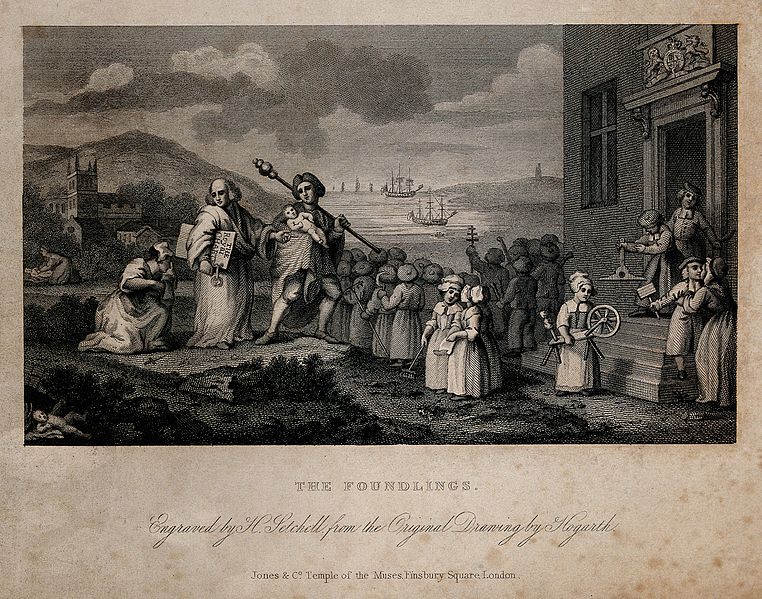Child labour in 18th century England: evidence from the Foundling Hospital
by Alice Dolan (University of Hertfordshire)

Every few years a child labour scandal in the clothing industry hits the British press, invoking wide public condemnation. This reaction is a modern phenomenon: 250 years ago, child labour in textile production was commonplace, not worthy of a headline.
Attitudes changed in the nineteenth century, leading to the passing of the 1833 Factory Act and 1842 Mines Act. But before this change, child labour was believed to have positive benefits for children.
One notable example was the Foundling Hospital, a charitable institution that supported abandoned children and was a keen believer in the benefits of child labour. The Hospital sought to produce upright citizens that would be able to support themselves as adults.
A key aim of the Hospital was therefore to train children to be ‘industrious’ from a young age. One governor wrote that the Hospital aimed ‘to give [the Foundlings] an early Turn to Industry by giving them constant employment’. This ‘Turn’ would train the children into economic self-sufficiency, stopping them from relying on parish poor relief as adults.
The Foundling Hospital opened its doors in 1741. Parliament recognised the value of its work and funded the acceptance of all children presented to it aged 12 months or under over the period 1756-60. This ‘General Reception’ brought 14,934 children into the Hospital.
The London Hospital could not cope with these unprecedentedly high numbers and new branches were founded, including one in Ackworth, Yorkshire, which received 2,664 children in the period 1757-72. Ackworth closed because Parliament regretted its generosity and stopped funding the General Reception generation in 1771.
Thousands of children required thousands of uniforms and Ackworth chose to make as many garments as possible in-house. On-site production both trained children to be industrious and offered financial benefits for the Hospital. Work completed on-site was cheap and reliable, and there was greater quality control.
The Ackworth ‘manufactory’ produced woollen cloth. The children prepared the fibre for spinning, span it and wove the yarn into cloth that was worn by their peers at Ackworth and was sold to the London Hospital and externally. Some cloth manufacturing work was outsourced, particularly finishing processes that required a higher level of skill.
Few concessions were made for the age of the makers and the London branch criticised and sent orders back that were considered to be of insufficient quality or inappropriate size. These were primarily business rather than charitable transactions.
The skill division also applied in the making of clothing. Underwear, stockings and girls’ clothing were made in-house because it was less skilled work. Garments were produced in high volumes. From 1761 to 1770, 13,442 pieces of underwear (shirts and shifts) and 19,148 pairs of stockings were made by the children.
Tasks such as tailoring, and hat and shoe making required long apprenticeships to develop the necessary skill – this work was therefore outsourced. But external supply had its problems. It was difficult to source enough garments for the hundreds of children at the branch. Products were more expensive because labour was not free and the Hospital had little influence on suppliers’ timeframes.
A Foundling started work young, aged 4 or 5, and continued to work through their residence at the Hospital. Despite this, they were luckier than their peers in the workhouse who endured worse conditions.
Many parents chose to send their children to the Foundling Hospital to give them better life chances through the greater educational and apprenticeship opportunities offered. Putting the children to work, which seems cruel to us, was a key educational strategy to help them achieve economic independence in adulthood. Its financial and logistical benefits were welcome too.

